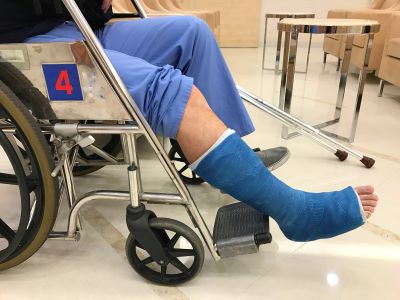
Understaffing, a problem that affects over 90 percent of the nursing homes and long term care facilities in South Carolina, usually causes unintentional injuries in these facilities. Understaffed facilities are, well, understaffed. For example, no one is on watch duty in common areas. Furthermore, the remaining employees are stressed. Most of us know what it’s like to do the jobs of two or three people.
Negligent injuries aren’t malicious, but they are intentional. Furthermore, nursing home residents are physically and/or mentally vulnerable. That’s why they’re in a nursing home in the first place. Therefore, a Columbia personal injury attorney can often obtain substantial compensation for these victims. This compensation normally includes money for economic losses, such as medical bills, and noneconomic losses, such as pain and suffering.
Falls
Slip and fall injuries often put people in nursing homes. They usually extend their stays as well. Most nursing home residents fall at least once.
Well-staffed facilities partner workers with residents, so a resident can more easily walk down the hall, get up from a seated position, and sit down. At understaffed facilities, residents are largely on their own.
Staffing levels don’t affect the duty of care. Nursing home owners still have a duty of care to ensure that residents are reasonably safe. This duty includes immediately addressing, and removing, fall injury hazards.
Bedsores
Residents often develop serious pressure ulcers in understaffed facilities. Especially during low census periods, employees don’t make rounds and turn residents over in bed at least once every two hours, as is the standard of care in these cases.
On a related note, many understaffed facilities assign less-qualified professionals, like patient care technicians, to these tasks. Particularly in the dark, these workers often don’t spot early stage bedsores and intervene promptly.
If one resident developed a bedsore, the owner is on notice of the problem. As outlined above, the owner must immediately address the problem, usually by assigning additional staff.
Resident-on-Resident Assaults
Most long-term care facility residents have child-like minds as well as child-like bodies. Petty disagreements quickly become violent. Additionally, there’s always at least one bully in any group setting.
Well-staffed facilities station workers in common areas to proactively break up these arguments. Understaffed facilities send workers to clean up once the damage is done. Most residents are so frail that a small amount of physical force causes a serious injury.
Malnutrition
Most nursing home residents have plenty of food on their plates. But our senses degrade as we age. Since residents don’t feel hungry, they don’t eat. Malnutrition could be a standalone injury or it could contribute to one of the aforementioned injuries, such as falls or bedsores.
Industry standards clearly establish resident-staff ratios, especially in dining areas. If the facility fell below that level, a Columbia personal injury attorney can establish negligence, which is basically a lack of care.
Medication Errors
Understaffed facilities often thrust less-qualified professionals into positions they aren’t qualified to hold. We mentioned one instance above. At other facilities, nurses or even LVNs (licensed vocational nurses) don’t distribute medication. Instead, a patient care tech assumes this responsibility.
When workers are negligent during the course and scope of their employment, their employers are financially responsible for damages. The respondeat superior rule adds another layer to a nursing home negligence claim. Usually, an out-of-state holding company legally owns the negligent nursing home.
Work With a Diligent Richland County Lawyer
Injury victims are entitled to significant compensation. For a free consultation with an experienced personal injury lawyer in Columbia, contact the Marc Brown Law Firm. Virtual, home, and hospital visits are available.
Source:
ahcancal.org/News-and-Communications/Press-Releases/Pages/Survey-94-Percent-of-Nursing-Homes-Face-Staffing-Shortages.aspx